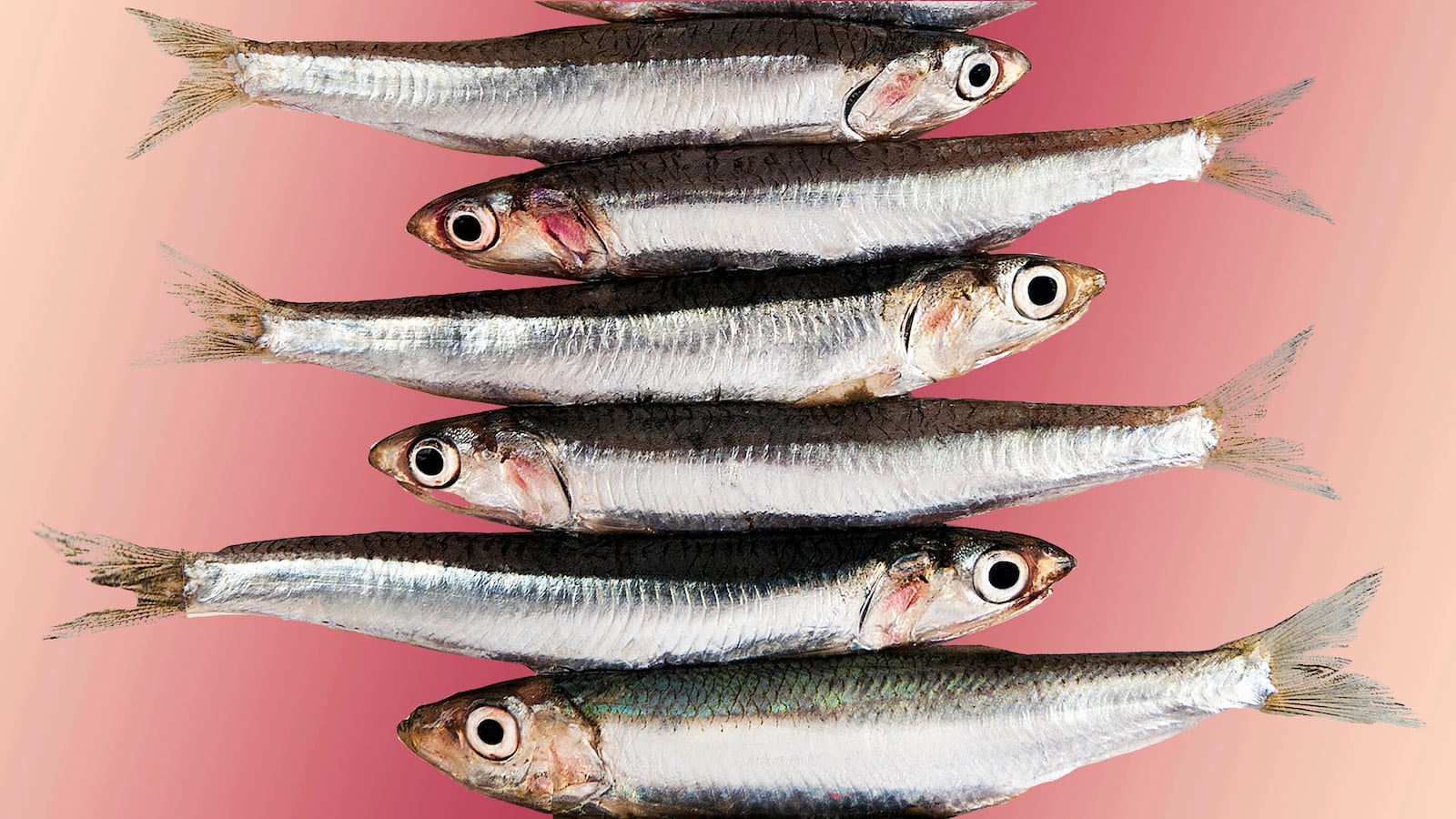I like to think that because you are reading this article, you are already an anchoviphile drooling for new recipes. However, if you arrived anchovy-curious, or if you think you are a hater, rolling in it for the revulsion, I am here nevertheless, ready and proud to be your guide, savior, and pusherman.
First, forget about the fishy brown bits that appeared on the “everything” pizza you ordered that time, ruining the party. That’s not what we are talking about here. Maybe you’re thinking right now about some things you picked off a Niçoise salad and wondering if those were anchovies? Oh no, I certainly don’t like those! Maybe you even tried cooking with them yourself, having heard the hype, but it didn’t work out and the rest of the jar is still in the fridge? Go throw that out right now, because the truth is that no matter what the quality of the anchovies you buy, they are at their best when first opened, and then good for only a couple of days.
But enough about the worst. The best anchovies, whether salt-or oil-packed, open up a world of flavor that is surely of the ocean, but with a salty, solidly ashore savor that can be as unignorable as it is undetectable and as chewy as a sip of seawater. You’ll know it when you taste it in a good Caesar salad, in spaghetti alla puttanesca, or in warm, buttery bagna cauda.

Anchovies are available several ways. The pickled type, boquerones, are delicious to have as they are, with drinks, but I don’t really cook with them. Salted anchovies are what I use, and they come two ways: whole, headless, and packed in salt; and fillets packed in oil. Both are good and deciding which to cook with is mostly about how many anchovies you are going to use and how much time you have. Salt-packed anchovies, which often come in larger cans, need filleting before use—it’s not hard and only mildly graphic. To do it, rinse the salt off the number of anchovies that you plan to use now and put them in a bowl of cold water to soak for 10 minutes. Cover any anchovies remaining in the can with a layer of salt to keep in the fridge for later. Lift an anchovy out of the bowl of water and, with your fingers, open the abdominal cavity to find the spine. Starting at the head end, pull one of the fillets away from the spine, swish it in the water, and set aside, then repeat with the other fillet. It’s okay if they tear a little, but if the fillets are stiff and sticking to the spine, let them soak a few minutes more to soften. Discard the bones, bits, and water and drip a little oil onto the fillets, especially if you’re not using them right away.
Oil-packed fillets are easier and often just as good. They generally come in 2-ounce cans that contain 10 to 12 fillets. If you don’t use the whole can in your recipe, either snack on the rest (I recommend on buttered bread with a cold glass of pink or white) or leave unused fillets in their oil and refrigerate for up to 2 days.

Typically, at my dinner parties, everyone eats standing around for at least part of the time. People get hungry, smelling enticing smells while they drink and talk in the kitchen, and start tearing into loaves of bread, dipping and smearing, and looking for where to put olive pits and radish tops. Kids’ mouths go green as a gang of them get to work with the chips on a bowl of guacamole. If I’ve made bagna cauda, it goes fast too. Bagna cauda—hot fragrant anchovy sauce to dip raw turnips into—might sound, to some, more like the end of the party than the beginning, but my experience tells a different story. Everyone, even the kids, loves bagna cauda.
Sometimes, however, the company isn’t right for dips and we need to eat it, whatever it is, another way. Times like when the guests are awkward with each other, meeting for the first time. Or it might be that it’s too cold in the backyard and we want to come in and sit, and the table is too big for everyone to reach. Or maybe I’m just feeling fancy. So I put this dip on plates, and everybody gets one! It’s more polite, sure, but no less fun, and as a bonus it helps to avoid squabbles and stains.
INGREDIENTS:
- 2 Almond-size garlic cloves
- Kosher or sea salt
- One 2-ounce can anchovy fillets (10 to 12 fillets), drained
- 1 Tbsp Unsalted butter
- good Olive oil
- 1 Black truffle (optional)
- 1 1/2 pounds Tender vegetables, such as white turnips, fennel, carrots, rutabaga, kohlrabi, radishes, artichokes, Jerusalem artichokes, celery
- 1 tsp White wine vinegar
- 1 Tbsp Finely chopped parsley (if not using truffle)
DIRECTIONS:
Using a mortar and pestle, pound the garlic with a pinch of salt until nearly liquid, then add the anchovies and pound to a paste. In a small skillet or saucepan, over low heat, melt the butter with 2 tablespoons olive oil. Add the garlic and anchovy mixture and cook, keeping the heat very low and stirring and mashing the anchovies occasionally, until it all melts together and smells really good, about 10 minutes. Add the black truffle, if using, and keep warm while you assemble the salad.
Using a very sharp knife or mandoline, carefully slice the vegetables as thinly as you can. For some things, like carrots, a vegetable peeler is good for making thin strips. Round shapes should be cut in half and set on the flat side for further slicing. Put the sliced vegetables in a large bowl and dress with salt, the vinegar, and 2 tablespoons olive oil. Toss in the parsley if you’re not using truffle. Taste, adjust, and spread onto salad plates or a platter, not piled up, so that the bagna cauda can get everywhere. Spoon the warm bagna cauda over the salad and serve.
From Almonds, Anchovies, and Pancetta by Cal Peternell. Copyright © 2018 by Cal Peternell. Reprinted by permission of William Morrow, an imprint of HarperCollins Publishers.






